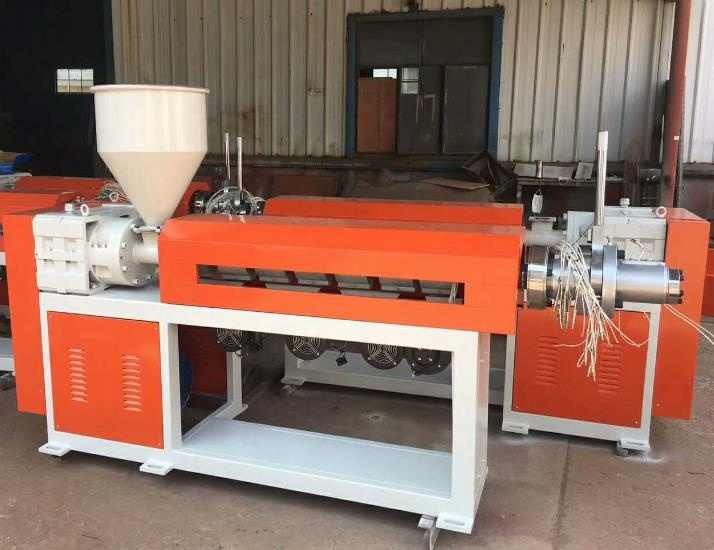
The twin-screw extruder, as the main equipment for plastic granulation and blending production, is composed of multiple systems that complement each other to complete production tasks. The following are the main system components of the twin-screw extruder:
Feeding System:
This includes a hopper, mixing motor, and feeding motor. The primary function of this system is to prevent material accumulation and ensure smooth entry of materials into the feed inlet.
External Heating System:
Primarily using heating rods and barrels, this system efficiently increases the temperature of the materials to facilitate plasticization.
Cooling System:
A heat exchange system composed of thermal oil or water is used to reduce the heat of the extruder body, thereby effectively controlling the barrel temperature.
Hydraulic Screen Changing System:
This system uses replaceable screens to intercept impurities, improve the degree of plasticization, and ensure the uniformity and stability of the produced material’s quality.
Vacuum System:
Used to draw out moisture and other low-molecular volatile substances from the materials.
Electric Control System:
This system monitors and controls the related equipment of the main and auxiliary feed systems to ensure the normal operation of the extruder.
Drive System:
Composed of motors, reducers, bearings, and other parts, the primary function of this system is to drive the screws and provide the required torque and rotational speed during extrusion.
Screw System:
This is the most important component of the extruder, which can be divided into conveying section, melting section (vent port), plasticizing section (vacuum port), and discharging section. The screw system primarily completes the plasticization and conveying of materials, significantly impacting the performance and quality of the finished product.
Additionally, depending on specific applications and models, the twin-screw extruder may also include other auxiliary systems or devices, such as unwinding devices, straightening devices, preheating devices, etc., to meet different production needs.
In summary, the various systems of the twin-screw extruder work together to complete the processes of material conveying, plasticization, and extrusion, ensuring product quality and production efficiency.



